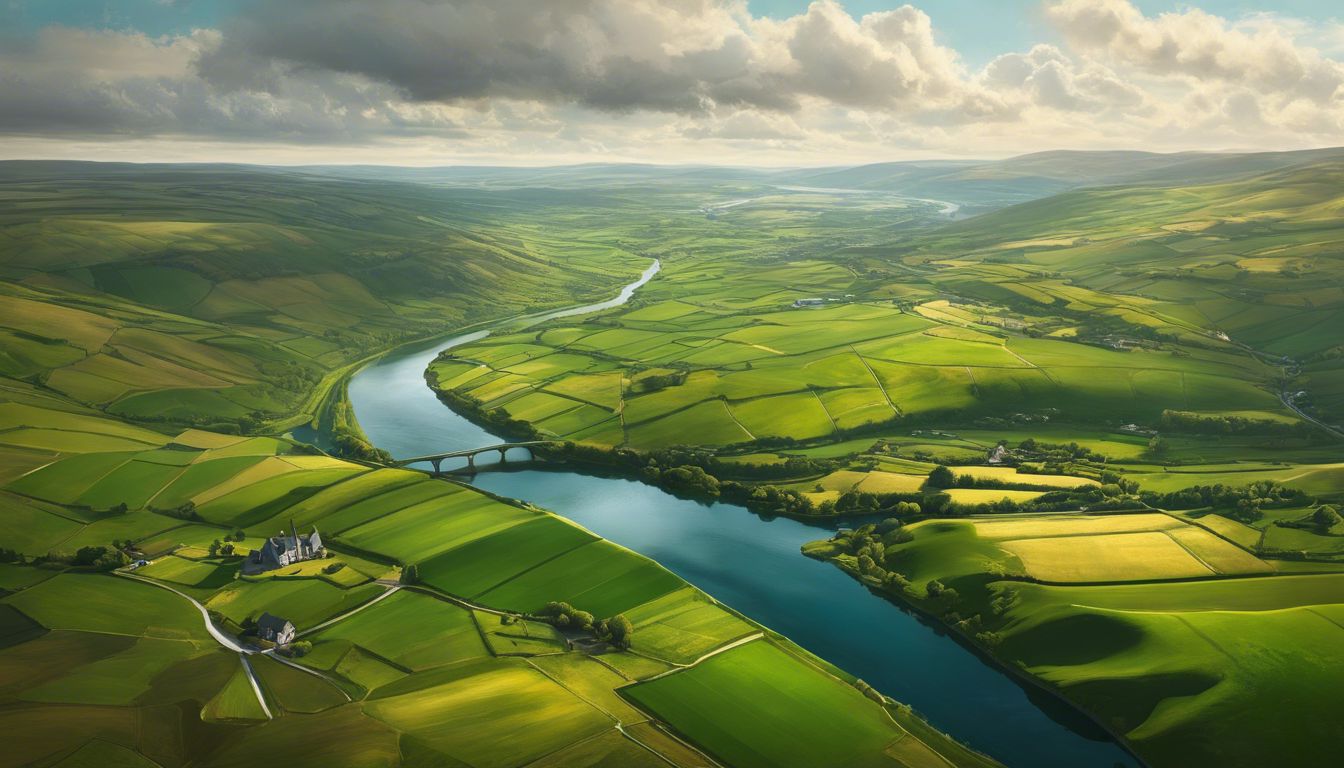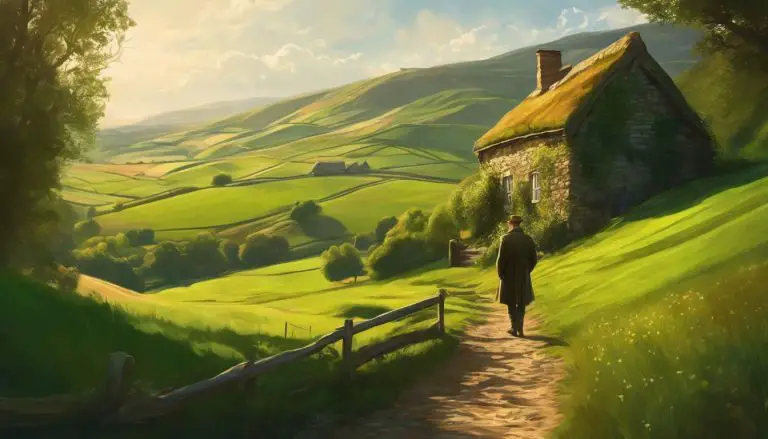How Big is Ireland? Exploring the Size and Dimensions of the Emerald Isle
How Big is Ireland? Exploring the Size and Dimensions of the Emerald Isle
Ireland is a country known for its green hills and rich history. It’s about as big as Indiana in the US, with an area covering 3.8 million square miles. That’s only 0.86% the size of America! You can find Ireland next to a huge ocean called the Atlantic, with more than 1,970 miles of coastline to explore.
Over seven million people live there, enjoying cities like Dublin and speaking two languages: English and Gaelic.
The land has many special places, like high mountains and long rivers that make it beautiful. Ireland’s small size makes it easy to compare with other countries or states you might know.
Even though it’s not very wide or long – only about 302 miles from one end to another – there are lots of interesting things packed into this island nation.
Driving across all of Ireland doesn’t take too long either; imagine driving through landscapes full of stories while using Euros to buy snacks along your journey! Get ready for a fun trip through Ireland’s lands!
Key Takeaways
- Ireland has an area of about 32,595 square miles and a population of over 7 million people.
- The country’s tallest peak is Carrauntoohil at 3,406 feet high, and its longest river is the Shannon at 224 miles long.
- Compared to other countries, Ireland is close in size to Indiana in the U.S., Hungary, and Portugal.
- Driving across Ireland from coast to coast takes around 4 to 5 hours due to its length of approximately 302 miles.
- With diverse landscapes like green hills, cliffs, lakes, and ancient monuments, Ireland offers rich natural beauty.
The Land and Geography of Ireland
Ireland covers an area of about 32,595 square miles and has a population of approximately 4.9 million people. The island is located in the North Atlantic Ocean, west of Great Britain, and features diverse landscapes ranging from mountains to grassy plains.
Area and population of Ireland
The Emerald Isle, a land of lush greenery and ancient Celtic culture, takes pride in its compact size and welcoming population. Here’s an at-a-glance view of Ireland’s area and demographic particulars:
| Total Area | 70,273 square kilometers (27,133 square miles) |
|---|---|
| Population (Entire Island) | Over 7 million |
| Population (Republic of Ireland) | Approximately 5.1 million |
| Population (Northern Ireland) | About 1.9 million |
| Capital City | Dublin |
| Currency | Euro |
| Native Language | Gaelic (Irish) |
| Coastline Length | 3,172 kilometers (1,970 miles) |
This snippet encapsulates essential details, connecting enthusiasts to the heart of Irish cultural identity through its dimensions and populace.
Location of Ireland in the world
Ireland is situated on the westernmost edge of Europe, surrounded by the Atlantic Ocean. Its geographical coordinates are approximately 53°25’N latitude and 8°00’W longitude. The island shares its eastern border with the United Kingdom, separated by the Irish Sea.
This strategic location has shaped Ireland’s history and culture, influencing its trade, communication, and interactions with neighboring countries.
Ireland’s proximity to both mainland Europe and North America has played a significant role in its rich heritage and cultural exchange over centuries. The country’s unique position as an island nation offers stunning coastal landscapes and a long maritime tradition that continues to influence its identity today.
Highest, largest, and longest features in Ireland
Covering a vast area of over 32,595 square miles, Ireland is home to various notable natural features and landscapes. Here are some of the highest, largest, and longest features in Ireland:
- Carrauntoohil: Standing proudly as Ireland’s tallest peak, Carrauntoohil reaches an impressive height of 1,038 meters (3,406 feet) above sea level.
- River Shannon: The River Shannon is the longest river in Ireland, flowing approximately 360.5 kilometers (224 miles) from its source in County Cavan to the Shannon Estuary.
- Lough Neagh: This expansive freshwater lake situated in Northern Ireland is not only the largest lake on the island but also holds the title for being the largest lake by area in the British Isles.
- Cliffs of Moher: These majestic cliffs stretch along the Atlantic coast of County Clare and reach heights of up to 214 meters (702 feet) above the crashing waves below.
- MacGillycuddy’s Reeks: Known for their stunning beauty and challenging hiking trails, this mountain range boasts some of the highest peaks in Ireland and includes landmarks such as Carrantuohill and Beenkeragh.
- Giant’s Causeway: This UNESCO World Heritage Site consists of thousands of interlocking basalt columns that form a unique hexagonal pattern along the Northern Irish coastline.
- Killarney National Park: Recognized for its exceptional natural beauty and diverse ecosystems, this national park encompasses rugged mountains, serene lakes, and lush woodlands within its boundaries.
- Connemara National Park: Home to striking vistas and a rich variety of flora and fauna, Connemara National Park offers captivating landscapes including bogs, heaths, forests, and stunning mountain ranges.
How Ireland Compares to Other Countries and States in Size
Ireland is about the same size as the US state of Indiana, and slightly larger than South Carolina. In comparison to other countries, it’s similar in size to Hungary and Portugal.
Similarities to other countries and US states
Ireland is about the size of Indiana in the United States. Both share rolling green landscapes and rich cultural histories. Ireland’s population is roughly 7 million, similar to that of the state of Virginia.
The country’s lush fields are comparable to the scenic beauty found in parts of England and France.
Moving on to “Essential Geographical Facts about Ireland”..
Comparison to the 5 largest countries
Ireland is approximately 0.86% the size of the United States, covering about 3.8 million square miles. The country’s land area is roughly equivalent to that of Indiana in the United States. Its population, while vibrant and rich in culture and history, amounts to just over 7 million people across the entire island.
The next section delves into essential geographical facts about Ireland.
Essential Geographical Facts about Ireland
The length and width of the island, as well as the time it takes to drive across Ireland, are important geographical facts to consider. Additionally, exploring the diverse landscapes of Ireland provides insight into the unique beauty of the Emerald Isle.
Length and width of the island
Ireland is about 302 miles long and 174 miles wide, with an overall area of around 32,595 square miles. The lush green landscapes stretch across the island’s length and breadth, creating a picturesque scenery that spans from its northernmost point in Malin Head to the southern coast at Mizen Head.
Driving across Ireland can take approximately six hours from coast to coast, allowing travelers to explore the diverse terrains and enjoy the unique beauty of this captivating island.
With over 3,000 miles of coastline and varying landscapes such as rugged cliffs, sandy beaches, and rolling hillsides adorned by castles and ancient ruins, Ireland offers a rich tapestry of natural wonders waiting to be explored.
Time it takes to drive across Ireland
Driving across Ireland, from its eastern point to the western coast, takes approximately 4 to 5 hours. The length of the entire island is around 302 miles (486 kilometers), making it a manageable journey for those wanting to explore its diverse landscapes within a single day trip.
With scenic routes and picturesque views along the way, driving across Ireland offers an opportunity to witness the captivating beauty of this ancient land firsthand.
The lush green fields, charming villages, and historic landmarks contribute to an immersive experience as you traverse the Irish countryside. Whether exploring iconic sites or discovering hidden gems off the beaten path, a drive across Ireland promises an unforgettable adventure showcasing the unique spirit and allure of this enchanting island.
Landscapes of Ireland
Covering Ireland’s diverse terrain are rolling green hills, rugged cliffs, and stunning coastal vistas. The country’s landscape is adorned with emerald fields as far as the eye can see, earning it the nickname “Emerald Isle.” From the dramatic Cliffs of Moher to the enchanting Ring of Kerry, Ireland boasts a picturesque scenery filled with natural wonders that capture the hearts of all who behold them.
Inland, you’ll find enchanting lakes and mystical forests steeped in folklore and mystery, adding to Ireland’s mythical allure.
Ireland’s landscapes also include vast peat bogs that hold unique ecosystems and historic remnants. Dotting the countryside are ancient dolmens and burial sites dating back thousands of years; these megalithic monuments bear witness to Ireland’s rich cultural heritage.
FAQ and Conclusion
In conclusion, Ireland’s size and dimensions offer a unique blend of lush landscapes and rich cultural heritage. With a coastline stretching over 3,000 kilometers, the Emerald Isle captivates with its natural beauty.
Its comparably smaller geographic footprint to larger countries makes it an intriguing study, while also showcasing its distinct charm. From its vibrant green fields to the historic significance of Gaelic language and Celtic traditions, Ireland beckons exploration beyond its modest size.
FAQs
1. How big is Ireland in terms of land area?
Ireland’s total land area is about 84,421 square kilometers, making it a sizeable island with a diverse landscape.
2. What is the population size of Ireland?
As for its population size, around 4.9 million people live in Ireland.
3. Where can I find Ireland on a map and what are its dimensions?
You can spot Ireland to the west of England on a map; it stretches approximately 486 kilometers long and 275 kilometers wide at its farthest points.
4. Is Dublin the capital city of Ireland?
Yes, Dublin is not only the capital city of Ireland but also the largest city in terms of Irish geography and population.
5. Can you compare the size of Ireland to places like Texas or England?
Certainly! The entire island of Ireland would fit into Texas nearly three times over and is roughly similar in size to South Carolina or Maine. Compared to England, it’s slightly smaller.
6. What does the Irish territory include apart from mainland?
The Island of Ireland includes both the Republic of Ireland and Northern Ireland, encompassing rolling hills, rugged coastlines, and rich greenery typical of the Irish landscape.







